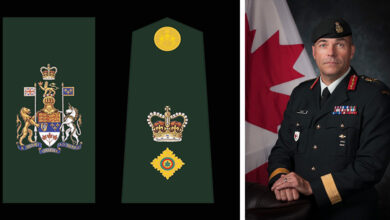Policy
Updated Canadian Forces Dress Instructions Released
Non-gendered DEUs, face tattoos, and beards are just a few of the changes Canadian Armed Forces (CAF) personnel will see to the Canadian Forces Dress Instruction that will go into effect in early September.
With a plethora of reports over the last year indicating a need for culture change within the CAF, there have been whispers since early in the year that Dress Instruction will also be amended. However, it is only recently that some light has been shed on those changes by the Department of National Defence (DND) and CAF.
“Decision not made lightly”
According to the Government of Canada’s updated webpage, the decision to update the Canadian Forces Dress Instructions was not made lightly. Much thought and discussion went into the exact changes that would be made. As part of the process, the Defence Advisory Groups and Gender Advisors, with current military members and future members, were consulted.
“The bottom line is, the Canadian Forces Dress Instructions are about fifty years old, and so the policy as a whole was overdue for revision. The appearance of the Canadian Armed Forces (CAF) has not kept pace with the Canadian society which it serves,” stated the website.
Non-Gendered Dress Code
In Sept. 2021, the Logistik online clothing catalogue opened to both genders. Hence clothing can now be intermixed. CAF members may choose whichever design and apparel best fits, as long as it is worn as per the Dress Instructions.
It is specifically pointed out that CAF members who identify as men can wear traditionally female attire such as skirts.
Changes to Hair
There are several changes made to both hair and facial hair. These changes include:
- Recruits don’t need to shave their heads.
- There is no maximum length for hair, with a caveat for safety, but hair must be tied for ceremonial occasions when it is longer than the shoulders.
- Any braids are allowed as long, with a caveat for safety.
- Any hair colour is allowed as long as it does not impede operational capabilities. For example, bright hair that could pose as a target in an operational environment.
- Beards, sideburns, moustaches, and goatees are now allowed with no minimum or maximum length as long as they are well-maintained. However, members can be asked to shave if they need to meet safety and operational requirements.
Tattoos & Jewelry
Specific requirements for tattoos and jewelry include:
- Tattoos to the face are allowed as long as they do not associate with a criminal organization, are sexually explicit, or are homophobic, racist, sexist, or xenophobic.
- Piercings, hoops, and spacers are allowed as long as they are 2.5 cm in length from the bottom of the ear.
- Safety and operational requirements always must be met. Spacers must not extend 2.5 cm in diameter.
- For ceremonial occasions: two maximum rings are allowed as long as they do not impede drills or gloves.
- Necklaces and bracelets cannot be visible; only studs are allowed in the ear.
- No restrictions on how many piercings.
- Piercings can be connected with a chain in one ear as long as both piercings and chain are within 2.5 cm in diameter or length.
For more information about what changes you can expect to the Dress Instructions, click here.









